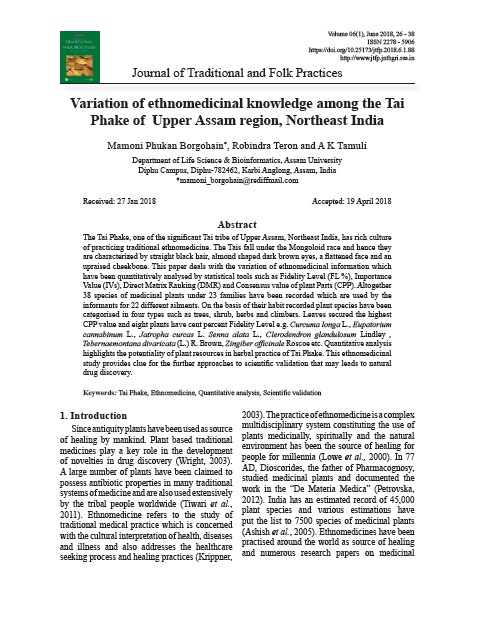Variation of ethnomedicinal knowledge among the Tai Phake of Upper Assam region, Northeast India
Keywords:
Tai Phake, Ethnomedicine, Quantitative analysis, Scientific validationAbstract
The Tai Phake, one of the significant Tai tribe of Upper Assam, Northeast India, has rich culture of practicing traditional ethnomedicine. The Tais fall under the Mongoloid race and hence they are characterized by straight black hair, almond shaped dark brown eyes, a flattened face and an upraised cheekbone. This paper deals with the variation of ethnomedicinal information which have been quantitatively analysed by statistical tools such as Fidelity Level (FL %), Importance Value (IVs), Direct Matrix Ranking (DMR) and Consensus value of plant Parts (CPP). Altogether 38 species of medicinal plants under 23 families have been recorded which are used by the informants for 22 different ailments. On the basis of their habit recorded plant species have been categorised in four types such as trees, shrub, herbs and climbers. Leaves secured the highest CPP value and eight plants have cent percent Fidelity Level e.g. Curcuma longa L., Eupatorium cannabinum L., Jatropha curcas L. Senna alata L., Clerodendron glandulosum Lindley , Tebernaemontana divaricata (L.) R. Brown, Zingiber officinale Roscoe etc. Quantitative analysis highlights the potentiality of plant resources in herbal practice of Tai Phake. This ethnomedicinal study provides clue for the further approaches to scientific validation that may leads to natural drug discovery.


